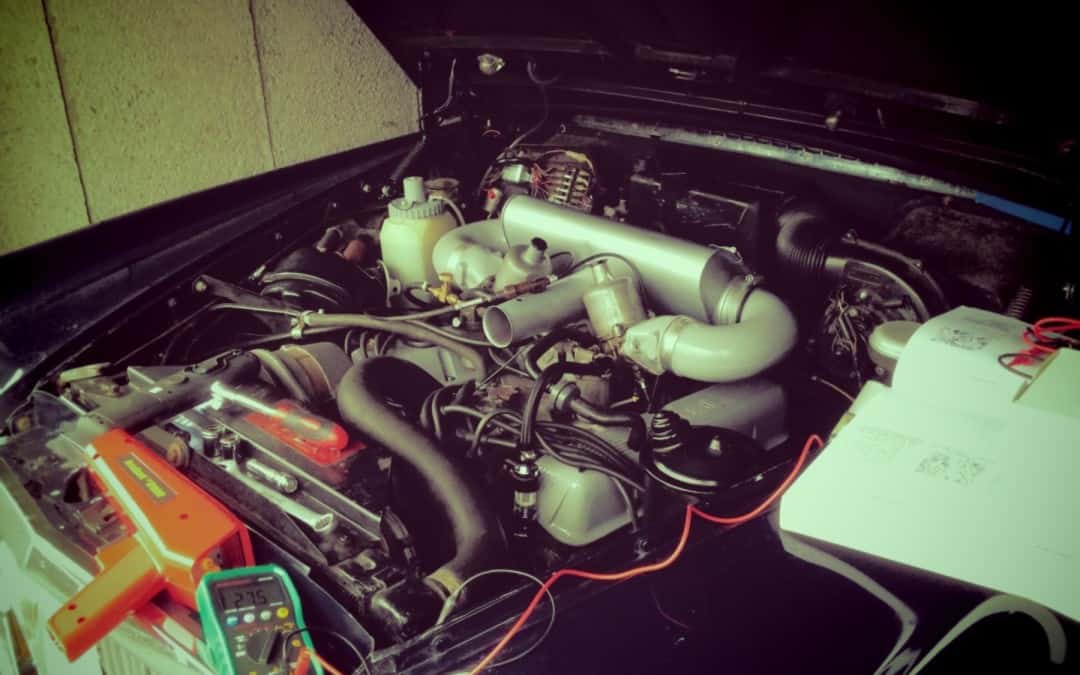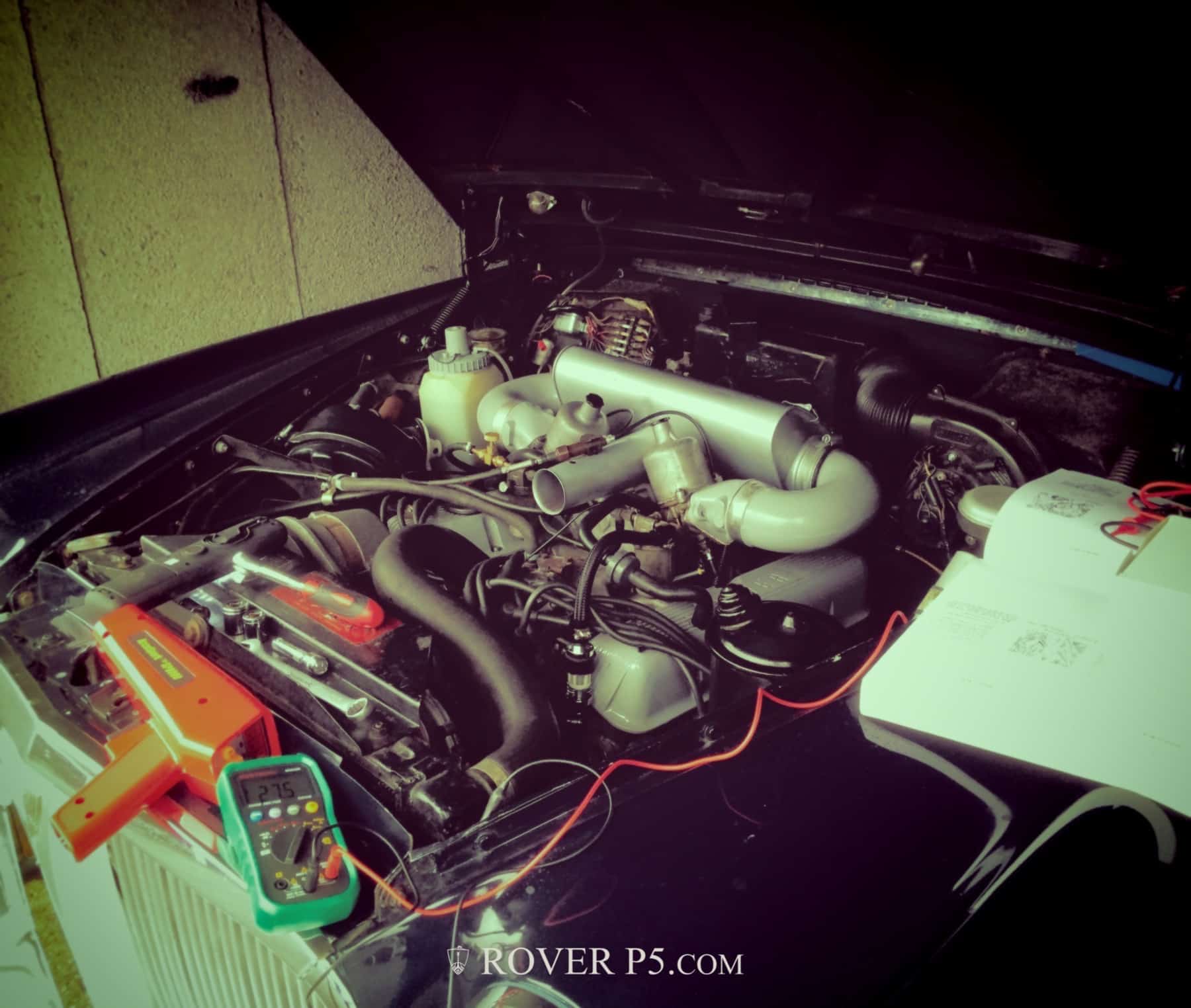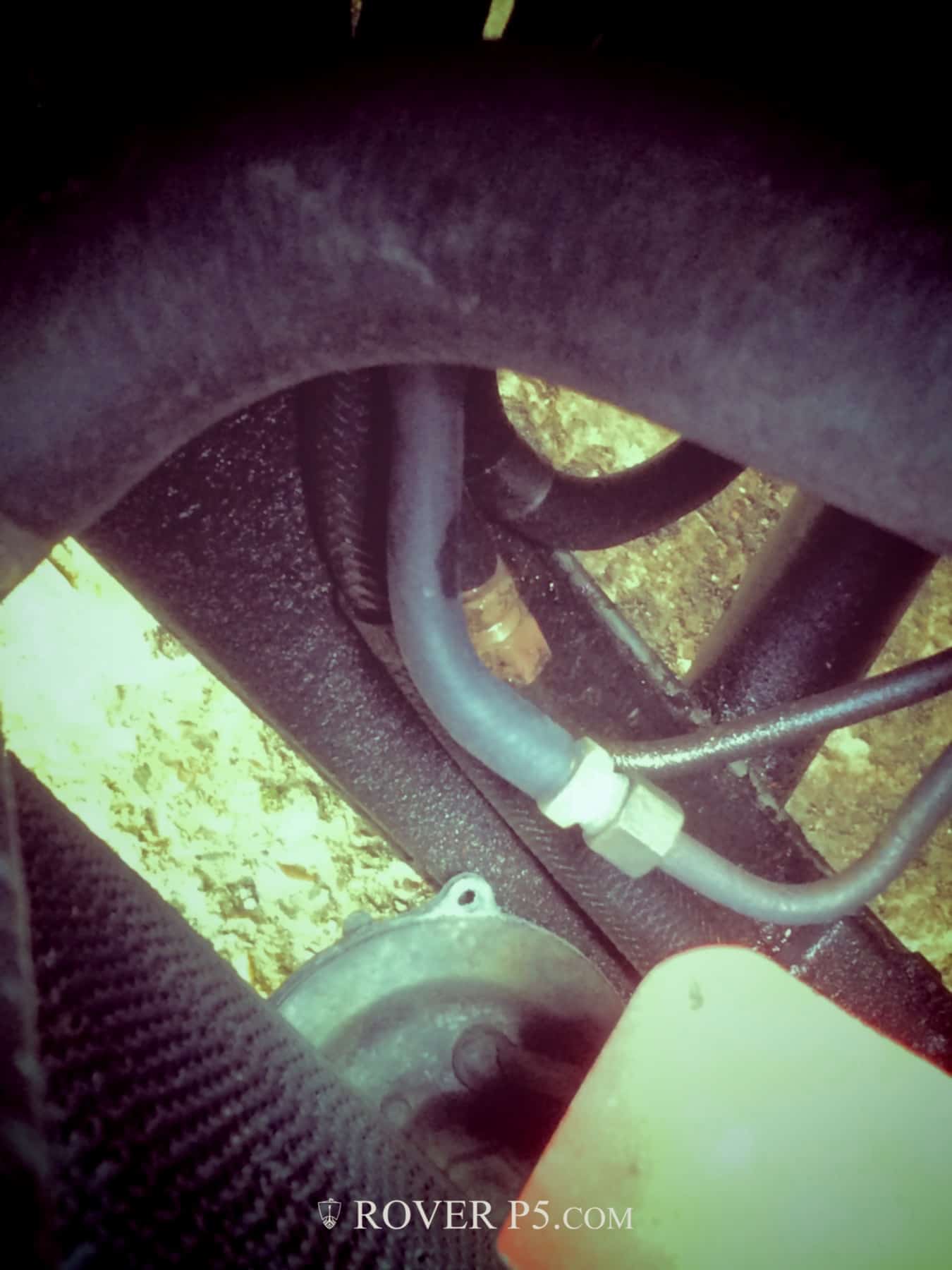Rover P5B Engine Tune-Up. When I bought the car earlier this year the engine ran OK-ish, but not exactly smoothly. Being new to the P5B, I wasn’t sure how much of that was down to a 46 year old design, how much was due to wear-and-tear or faults, and how much was due to poor engine setup.
The smoothness has gotten worse, firstly after I changed one of the jet pipes and tube, and then over time the car wouldn’t idle well, and from the sound of the exhaust I guessed all was not 100%. So, today being a day off work I’ve spent 6 hours fiddling and tuning. I’m really happy with the results, especially after a test drive and a few small tweaks. The engine idles smoothly now, and accelerates quicker. I’ll see over time whether the fuel consumption improves, but I’m guessing there’s be small improvement.
There are numerous sources of information on the web on how to tune a Rover V8 engine, but not all were detailed, some contradicted each other, and some were downright confusing. There’s also the P5B maintenance manual and the SU Carb tuning book, all of which I have. But none were definitive for the P5B.
Being new to the Rover and not very experienced wielding a spanner (previous adventures being some time ago with an original VW Beetle, which is a very different and much simpler beast), but being handy at DIY and willing to learn, I undertook to write my own (idiots) tune-up guide for the Rover V8 as preparation for today. I’ll publish my guide in the next few days – it includes various sources including the Rover Maintenance Manual. If nothing else, I’ll use it myself the next time I do the job, but it be useful to others.
Firstly, the matter of tools. I didn’t have a dwell meter, timing light nor carb balancer, so these have been bought over the last few weeks. I got the dwell meter on eBay – a cheapish multimeter with Dwell and RPM measurement, which is very useful as the dash tachometer isn’t sufficiently accurate. This was the one I bought: http://www.ebay.co.uk/itm/301314750679
After researching timing lights I didn’t buy the cheapest, as some are difficult to see in daylight, and the one I bought has a clip-on trigger wire which is convenient. It worked fine, and also has a tachometer: http://www.ebay.co.uk/itm/111467445562
Lastly, the carb balancer. Many people say that it’s perfectly possible to do this by just listening to the amount of ‘suck’ the carb is making, which I don’t doubt, but having so little experience I wanted something less subjective. I went with an STE Synchrometer that worked really well and simply: STE BK Synchrometer ITCBK1-30/1
So, with (new) tools in hand, I worked my way through the tune-up guide. After inspecting the points, which weren’t pitted, I measured the dwell angle. This being a more accurate way of measuring the points gap, it removes the errors caused by pitted points and wear and tear. Rover say the V8 should have a 26-28 degree dwell angle. My meter showed 14 degrees. The points are obviously quite new, and I’ve done about 3,000 miles on them so far. So either my cheap meter was wrong, or my car was badly out of tune. Turned out that it was my car – there’s a really easy adjuster on the outside of the distributor, and as I adjusted it towards 27 degrees the engine immediately sounded happier.
Result number one.
Next I checked the timing. Again, instead of being 6 degrees BTDC, mine was nearer 0 degrees. Advancing the distributor towards 6 degrees again caused a marked Improvement in engine sound and revs. I tend to use Super Unleaded, as the car was designed to run on 5-star leaded, so maybe it was adjusted to avoid pinking, but I’ll keep an ear open for pinking under load.
Result number two.
Next, after a brief test drive that found smoothness much improved, but also a compete unwillingness to rev from tickover unless the choke was pulled out, I embarked on the somewhat daunting task of tuning the SU carbs. Actually, in the end this was much easier than I feared. I started by slackening the carb links and measured the airflow. The lhs carb was saying ‘6’, the rhs carb was off the scale at more than 20. Hmm, quite a difference.
Adjusting the idle screw got them about equal and the idle at about 650rpm. Adjusting the fast idle sorted out the choke setting, and then adjusting the jet pipe height by listening to the engine note when raising the jet needle showed that the rhs carb was running much too rich, but the lhs was about right. Adjusting the mixture by adjusting the jet height sorted that out.
The result is a much better sounding car. The exhaust is blowing slightly at one of the joints, which needs sorting, but it still sounds and drivers much better. I had to lower the tickover a little after a few miles by adjusting the idle screw, but now it seems all good.
Result number three.
So, I had a dwell angle that was half what it should be, timing that was 6 degrees out and seriously unbalanced carbs. It’s amazing the car ran at all.
After that I did a bit of tinkering with a few bad bullet connectors – I bought a crimp tool and brass bullets to do these properly.
I also found that what I thought was a leaking steering box is in fact a leaking pipe to the gearbox oil cooler, which is an integral part of the radiator. I thought it seemed odd that the gearbox was taking more topping-up than the steering (which is still leaking, but nowhere near as badly as the gearbox oil cooler pipe) but as they both use red ATF oil, I’s assumed it was the steering box which is a notorious leaker on these cars. Anyway, the pipes are £15 from J R Wadhams, so that’s a result – will order a couple replace them.




